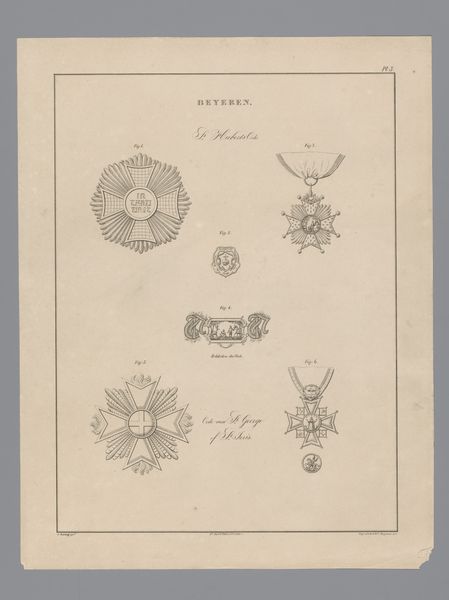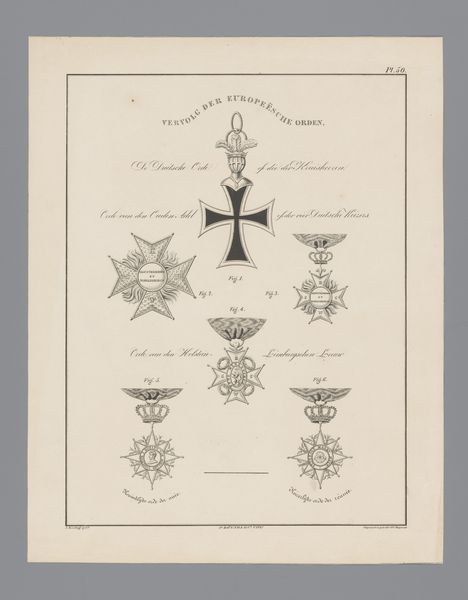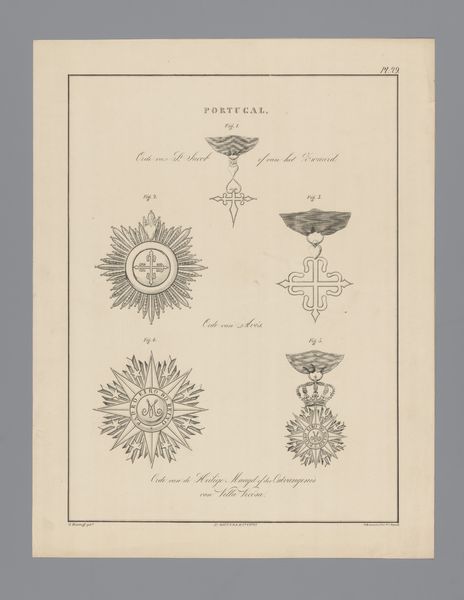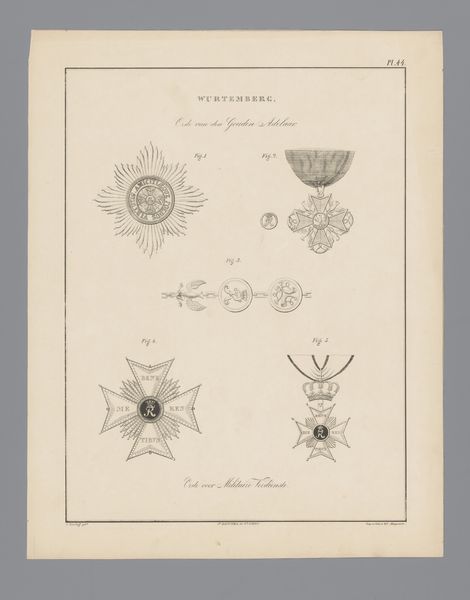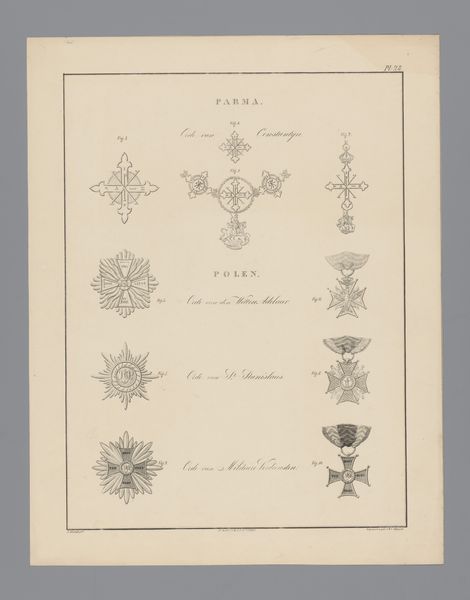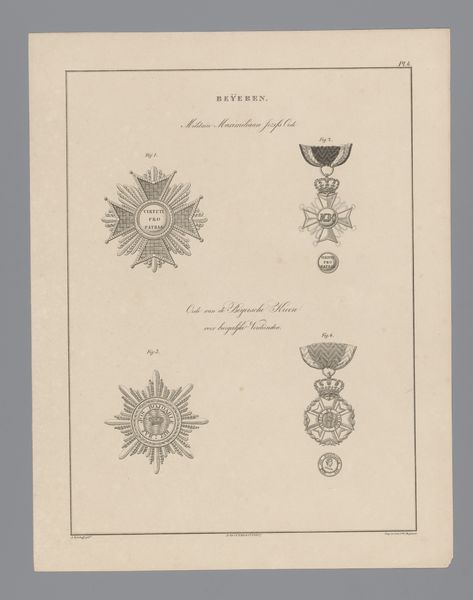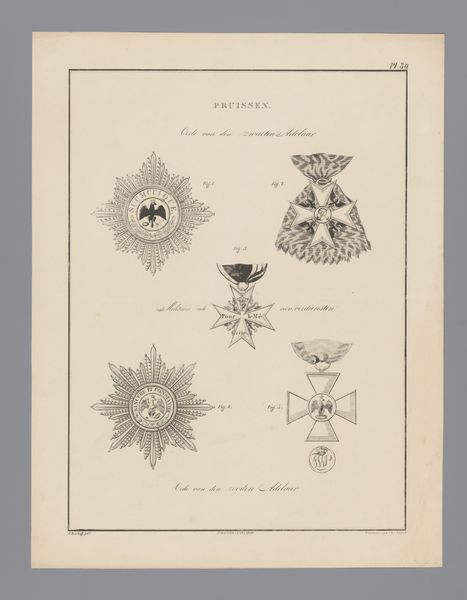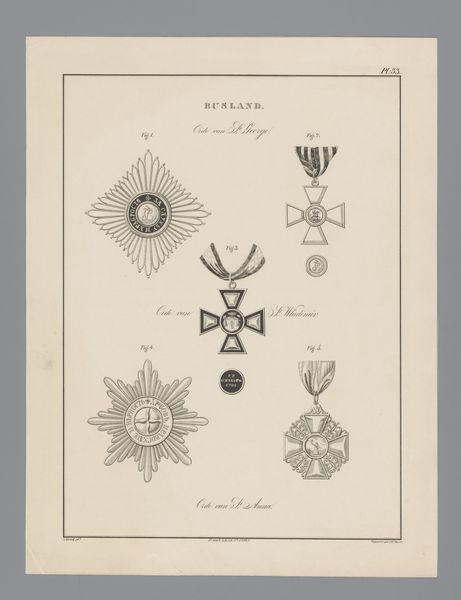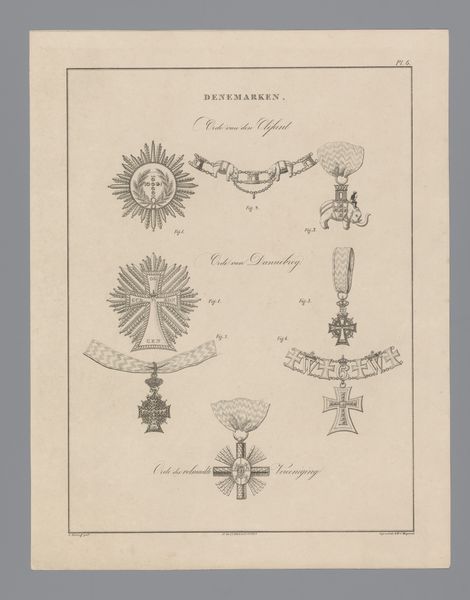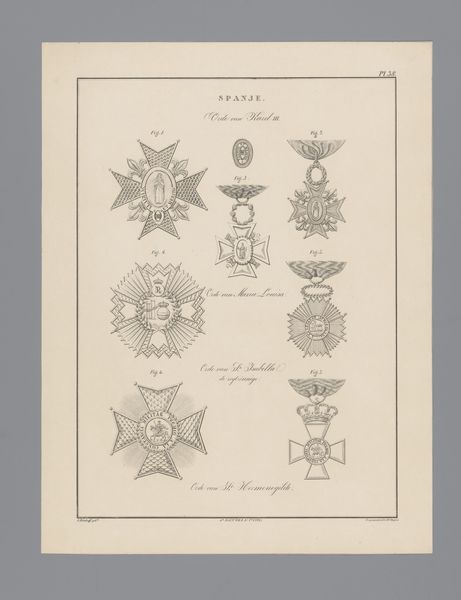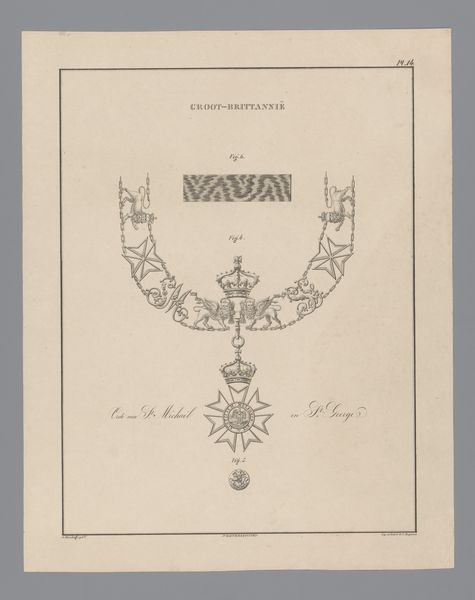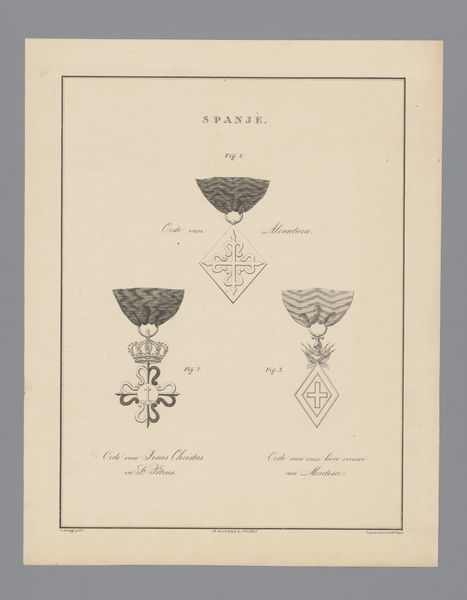
drawing, graphic-art, print, paper, ink, engraving
#
portrait
#
drawing
#
graphic-art
# print
#
paper
#
ink
#
geometric
#
line
#
history-painting
#
academic-art
#
engraving
Dimensions: height 410 mm, width 320 mm
Copyright: Rijks Museum: Open Domain
Curator: This detailed print from 1843 by Willem Charles Magnenat depicts various orders from Genoa and Greece. It's currently held in the Rijksmuseum. Editor: My initial impression is how meticulously rendered each design is. You can practically feel the weight and texture of the materials used to create these awards. Curator: Exactly! Consider these insignia beyond mere symbols of valor or service. They speak to a specific moment of nation-building and social hierarchies. What values were being upheld, rewarded, and consequently, excluded? Editor: Good point. And let's look closer at the methods of production here, particularly at the level of craft involved in rendering these highly specific graphic objects that evoke military achievement. Who were the engravers reproducing these images, and what were their own roles within that system? Curator: Those labor relationships are key, highlighting often invisible elements propping up these displays of authority and the political context behind these honors. In nineteenth-century Europe, awards represented the interwoven relationships of political capital, power and influence. Editor: It is important to remember too that there's the practical business of creating the engravings, the social transaction of buying and selling them, the movement of the products of labor in the engraving process to the location of viewing. And paper, ink, and engraving tools all imply global material networks, no? Curator: Certainly, these details are essential reminders of interconnected global trade routes that make such productions possible. Editor: So in looking at the labor to make the medals, the labor of the artist in engraving them, and then tracking their circulation, it reminds me that art, even historical graphic art like this, is fundamentally connected to everyday life and tangible processes of making and consumption. Curator: I agree completely! Considering that these historical medals, now artifacts presented for posterity, are documents of social relations—both of power and the often unacknowledged networks that sustain displays of hierarchy. Editor: And to examine those objects with that awareness allows us to see them not as fixed monuments of history but as stages within a dynamic, complex global network of power and people, materials, production, consumption, circulation, and exchange.
Comments
No comments
Be the first to comment and join the conversation on the ultimate creative platform.

